29 Of The Most Common Problems With LED Lighting September 27, 2023 – Posted in: General Info, Tutorials

Table of Contents
Are you experiencing issues with your LED lighting? We can relate to how irritating it is when lights flicker or buzz, and the brighess isn’t quite right. In this post, we’ll be looking into the most widespread problems associated with LED systems.
Hopefully, after reading through our guide you’ll gain a clearer understanding of what may be causing those performance problems so you can address them as best as possible!
Key Things To Remember
- Always ensure LED bulbs and other equipment like fittings are compatible with each other prior to installation.
- Poor wiring or loose connections in a lighting circuit can result in an insufficient flow of electricity. This will lead to improper voltage levels which causes flickering lights, buzzing/humming noise, incorrect brightness or dimness.
- To prevent issues with faulty drivers use the correct wattage and ensure adequate heat sink solutions for protection against overheating.
- Regular maintenance is key when it comes to making sure you get maximum longevity out of your LED system so any potential issues get addressed quickly and eliminate chances that could arise over time due experiencing uncomfortable output from existing fixtures.
Common Problems with Installation and Electrical Issues
Often the issues that arise are not the fault of the system itself but outside factors. Examples being improper installation or electrical issues. Most of these issues can be resolved with an easy fix.
In this section we will take a look at:
- Improper Installation
- Loose Wiring Connections
- Voltage Drop
- Using the Wrong LED Driver
- Poor Light Performance
Common Installation Mistakes
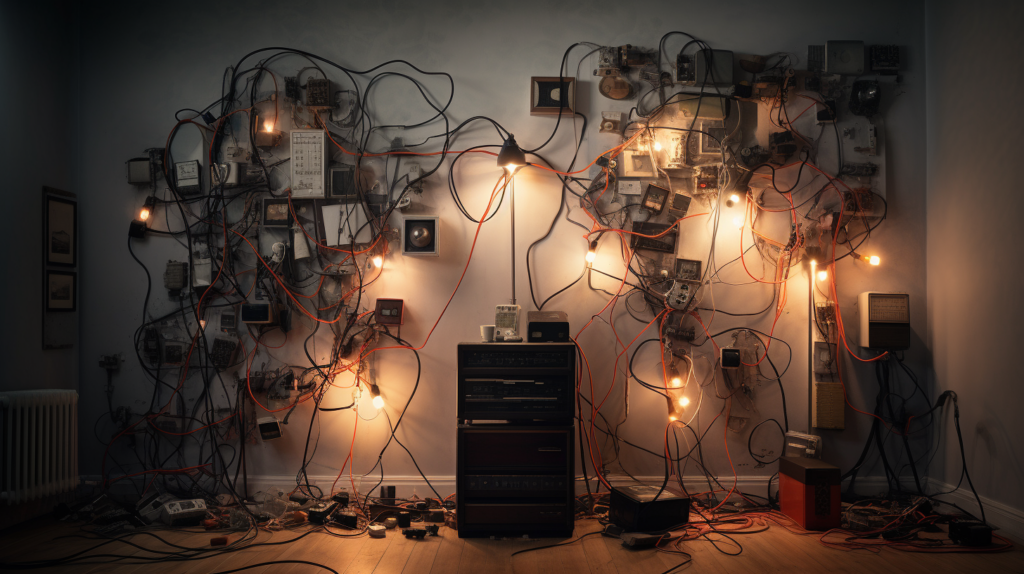
When installing LED lighting, one of the most common mistakes is not connecting the light fixture to its power source correctly. To ensure a safe and efficient operation of LED fixtures, check the wiring first. Even seasoned electricians can make trivial mistakes once in a blue moon.
Additionally, loose connections can cause an LED light to flicker or stop working altogether. Using the wrong driver for a light fixture can also lead to performance issues; drivers that are too high or low voltage will affect the output of an LED.
Voltage drop due to wire size and run length is also a problem encountered when installing LEDs but this issue can be avoided by using high-quality cabling and assessing load needs before installation begins.
Loose Electrical Connections in Lighting Systems
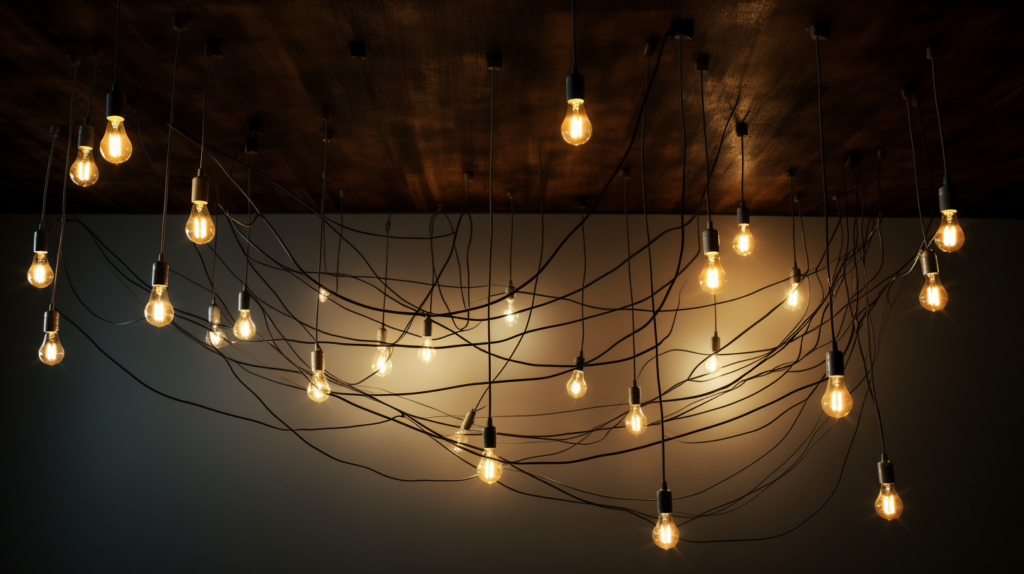
When LED lights are installed, it is essential that they are securely connected to a power supply; otherwise, this can cause problems. Loose electrical connections in lighting are one of the most common issues faced by homeowners and businesses alike.
This problem can result in buzzing or humming noises from fixtures, flickering LEDs causing a loss of visibility and performance, as well as complete failure of some light sources. It’s also incredibly annoying.
In any case, these poor connections will likely damage other components within the system due to excessive voltage drops or additional current draws on related wires.
Daisy-Chaining Causing Voltage Drop
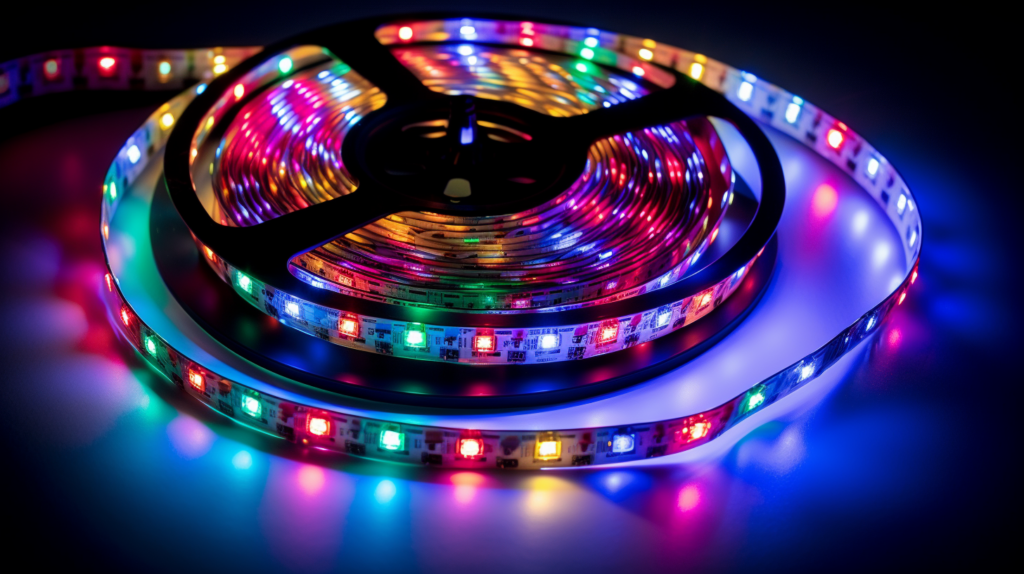
Another important issue to look out for when installing LED lights is voltage drops affecting their performance. If too much power from an inverter is being drawn through long wires, it can lead to problems with flickering and inadequate brightness output due to voltage losses over distance — this can easily happen when connecting multiple fixtures in longer circuits.
Daisy-chaining too many LED strips or lights together is a common problem we see that causes this. For strips, packaging will typically tell you how long you can run them for safely.
Using the Wrong LED Driver for your Lighting

Using the wrong LED driver for your lights can cause a host of electrical problems. Incorrectly installed or mismatched drivers could result in loose connections, inadequate voltage supply, insufficient power, and shorter light performance times.
This will ultimately lead to flickering or buzzing due to fluctuations and instability with the lighting’s current flow. Furthermore, incorrect wiring can create gaps between sockets which further reduces safety and encourages poor functioning LED lights that are more prone to failure over time.
All of this adds up to significantly reduce the quality of lighting performance as well as its overall longevity – meaning you may have to stock up on unnecessarily expensive bulbs more often than usual! It is therefore essential that compatible drivers are used in order not only protect your investment but also ensure optimal functionality from your LED lights.
Voltage Drop Affecting Performance
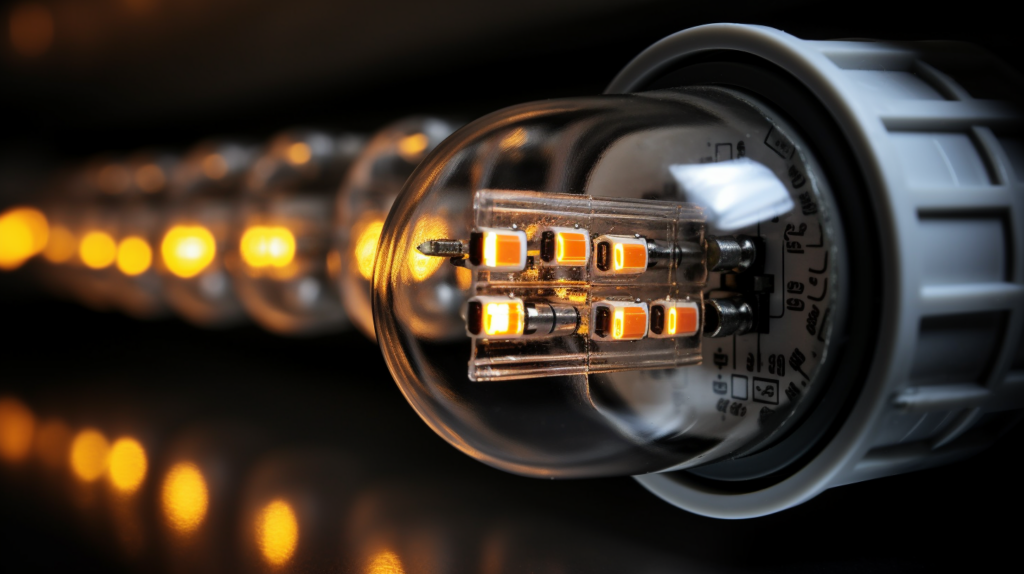
Voltage drop is an increasingly familiar problem when it comes to LED controllers. A voltage drop in an LED strip occurs from having too low of a voltage supply, essentially causing the lights to burn dimly and not as efficiently.
Over time, excessive voltage drops can decrease the energy supplied by a source leading to reduced brightness in LED lights. This could potentially lead to decreased efficiency and increased power consumption. This is due to attempting to draw more current at lower voltages with higher resistances thus reducing performance.
To address this issue:
- Ensure you have the correct wattage of driver for your light fixtures.
- Check that all electrical connections between components and systems are secure.
- Confirm that there is sufficient electricity flowing into each fixture.
Complications Due to Complex Electrical Circuitry

LED lighting can be complicated due to the often complex and detailed electrical wiring involved. If a system has not been set up correctly, it can cause all sorts of issues such as flickering lights, dimming and frequent power outages.
Additionally, there’s a higher chance that panel overloads can occur. These overloads are usually due to power surges moving through delicate circuits or because the fuses used are not the right ratings for specific connections.
Power surges typically happen because of malfunctioning appliances, poor wiring in certain areas of the building, damaged power lines, or lightning strikes. If we don’t take the right precautions, such surges can damage LED lights. It’s crucial to protect against them to avoid any damage to the lights.
You can easily notice signs that your lighting may have poor wiring. If you smell burning from outlets or sockets, it could be a sign of a dangerous overheating problem. Also, if fuses are frequently blowing, it might indicate an overload in one part of the circuit board. Both situations need further investigation to prevent any potential hazards.
Light Quality and Performance
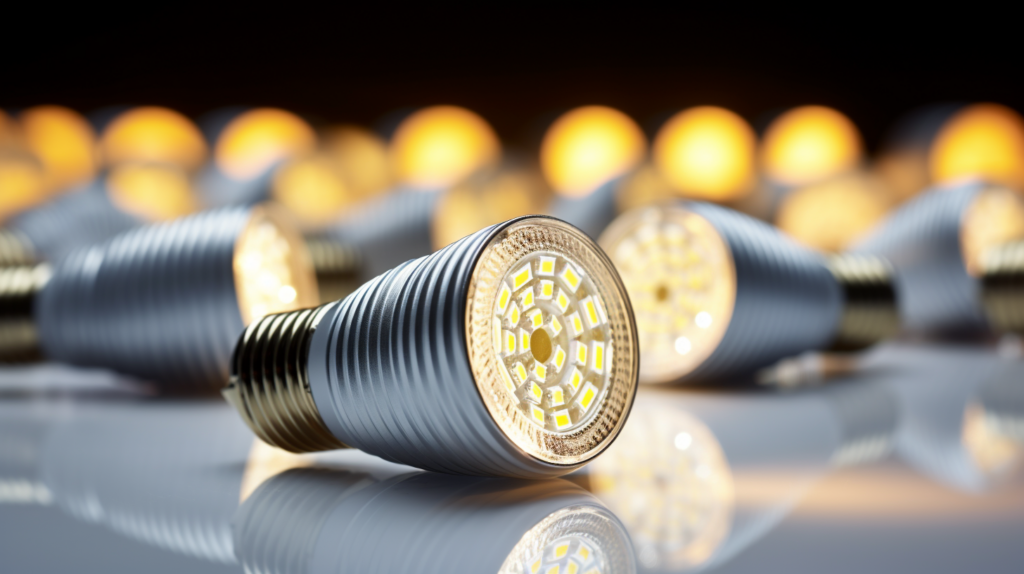
Poor light quality and performance is one of the most common problems of LED lighting. These include:
- inefficient light emission
- excessive brightness issues
- low color rendering index
- incorrect color display
- dim or flickering lights
Inefficient Light Emission
Often times, LED lights are inefficiently built or used, resulting in wasted energy and diminished lifespan of the lights. The bulbs used may not emit enough light due to low lumen output from poor quality LED chips that are often found in cheaper lighting products.
Poor-quality parts like lenses and reflectors can also obstruct the light and decrease efficiency.
Furthermore, if the LED driver or voltage output is incompatible, it can result in not enough power for the LED system to work correctly. This, along with other issues, can lower the effectiveness of our LED lamps. It also leads to extra, unexpected maintenance costs, in addition to the regular electricity bills.
Issues with Excessive Brightness
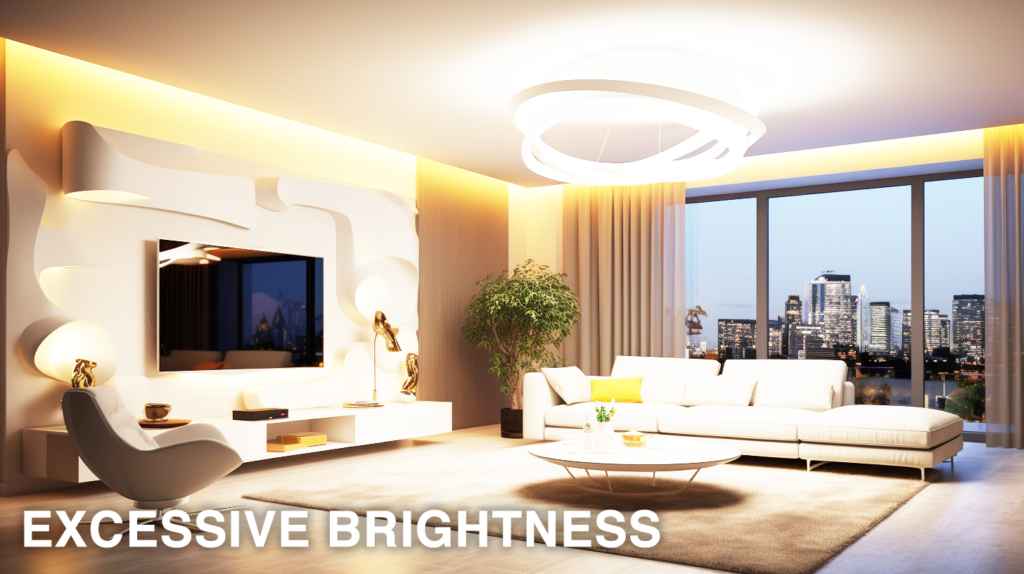
One of the more common problems with LED lighting is excessive brightness. An inappropriately bright light can be uncomfortable, as it creates glare which makes it difficult to see properly.
Too much brightness also has an unpleasant visual effect and results in a too-harsh lighting environment.
Exposure to the blue light from artificial lighting, especially the intense blue wavelengths emitted by white LEDs, can pose risks. It can negatively affect both sleep quality and eye health.
Generally, this problem is a matter of selection. Many customers over-estimate the amount of light required for their space. I recommend using our LED lighting calculator to determine the right amount of light needed for you. In addition, we recommend getting dimmable fixtures for any future purchases.
Low Color Rendering Index

Some types of LED lighting can present several issues, including a low Color Rendering Index (CRI) which affects the quality of color rendering. A CRI rating is used on a scale from 0 to 100 to measure how accurately colors are represented when compared to natural light.
LEDs with lower CRI ratings means that some colors may appear unnatural or have less vibrant tones under LED lighting. This is especially an issue in healthcare facilities where accurate color representation for diagnosis and treatment is important.
When choosing lights, everyone should think about the effects of a low CRI rating. This rating is important because it tells us how true-to-life the light shows colors. This is not only important for making our homes look nice and saving energy but is also very important in places like hospitals. In medical care spaces, having accurate colors can help with identifying illnesses and other medical needs.
Unfortunately, the only way to increase CRI is to replace the LED’s – whether it’s the bulb or the whole fixture. For most settings a 82 or higher color rendering index is sufficient and anything below 80 is sub-par.
Incorrect Color Display in RGB LED Lighting
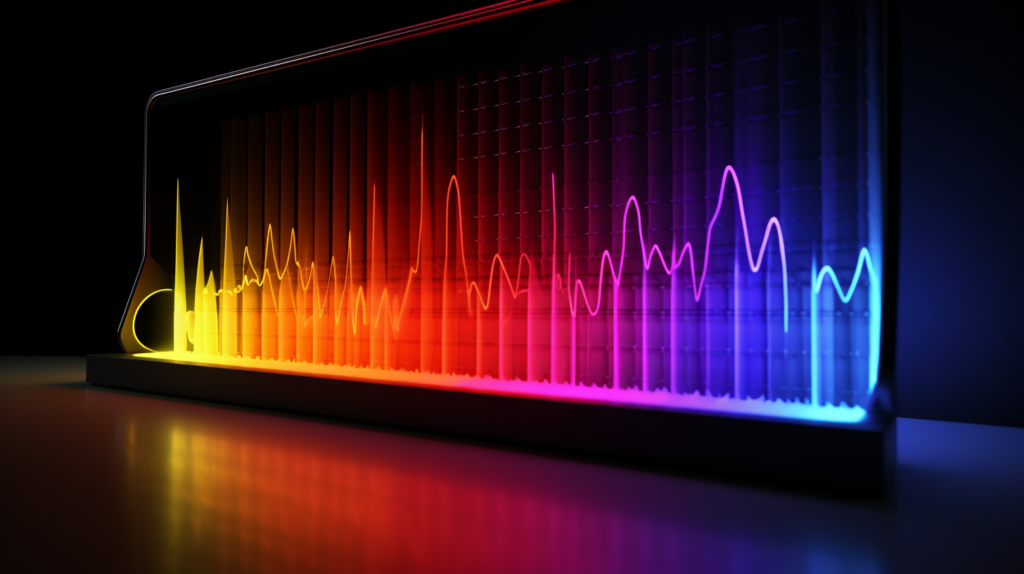
A common issue that users often encounter with LED strip lighting is the incorrect color display. Sometimes, you may notice that instead of emitting the color you’ve programmed into them, the RGB LED strips are only displaying a single color, usually red, green, or blue.
Alternatively, you may find that the lights aren’t producing a true white color, even when the white LED is selected. More often than not, this problem is due to electrical issues rather than the actual LED elements. Mismatched wires, faulty wiring or insufficient power supply could throw the color balance off track.
To fix these issues, you would first need to check if the power supply unit is capable of handling the power demand of the light strips. You could also inspect the wiring for any visible damages.
If you are not adept at handling electronics, it’s recommended to hire a professional to fix the issue and avoid further damage.
Pro Tip: A lot of remotes for LED light strips work on the same signal. This can cause mix-ups, making the lights show the wrong color.
Dim Light Output Issues

One of the most common problems encountered with LED lighting is dim LED light output. There can be a few reasons for this problem. One reason can be weak batteries or old wires that don’t give enough power. Another reason can be dimmers that are old or don’t work well with the lights. Or plainly, some LED lights produce insufficient lumen output by design.
To prevent this problem, it’s important to check the power source for all LEDs to make sure that there is enough voltage being supplied before installation. Also, ensure that if a LED light fixture has dimming capabilities, both the lamp and driver are dimmable compatible.
Finally, look for high-quality LED lights which produce higher lumens than conventional incandescent bulbs so that there’s no drop in illumination when making energy saving switches.
Pro Tip: Some LED drivers have a voltage adjustment switch that may be turned too low. Use at your own risk as it may decrease the lifespan of your lighting.
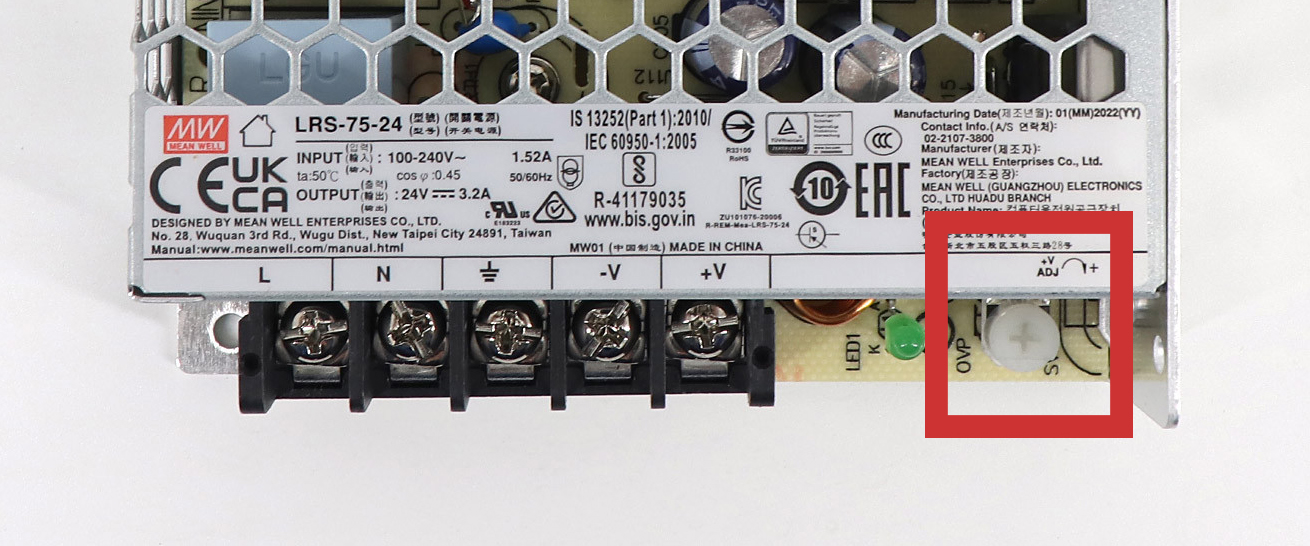
Flickering Problems in Illumination Devices
Flickering and dimming issues with LED lighting can be a concern for users. Low quality LED bulbs and drivers are more likely to experience flickering issues. Problems can also occur in high-quality lights if mistakes are made in the installation process. Another cause for this issue is loose electrical connections.
Flickering occurs when an LED light moves between less than 10% and 100%, whereas fluorescent lights tend to dim to about 0%. Commonly, LED lighting will flicker when it’s used with incompatible dimmers.
If your normal LED bulb is blinking and there isn’t a dimmer switch attached, it usually means there could be a problem with the LED light bulb.
Flashing and Then Turning Off: Intermittent Light Problems
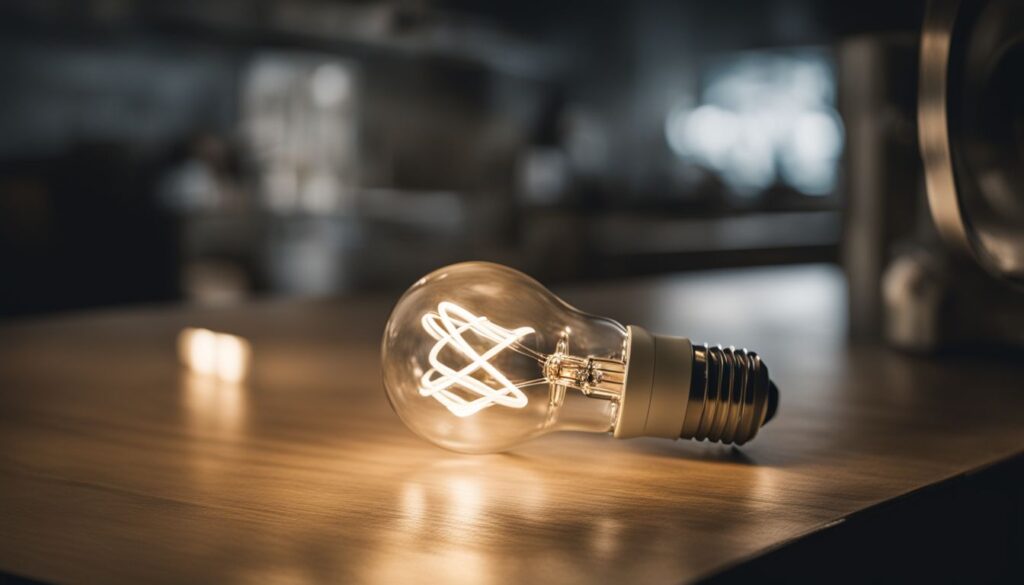
One other common problem in LED systems is intermittent light. This is when lights begin to flicker, flash, or even turn off unexpectedly during use. These issues are usually caused by loose wiring or a LED driver incorrectly configured for the wattage.
In particular, placing LED lamps in a circuit with an incompatible dimmer switch can also cause flickering.
When something like this happens, it’s key to remember that it could mean there is a technical issue that needs fixing right away. If not, it might cause bigger problems later on. Such a issues like making the fixtures burn out or make a buzzing noise because the electricity going through them isn’t balanced.
Compatibility and Usability In LED Lights & LED Bulbs
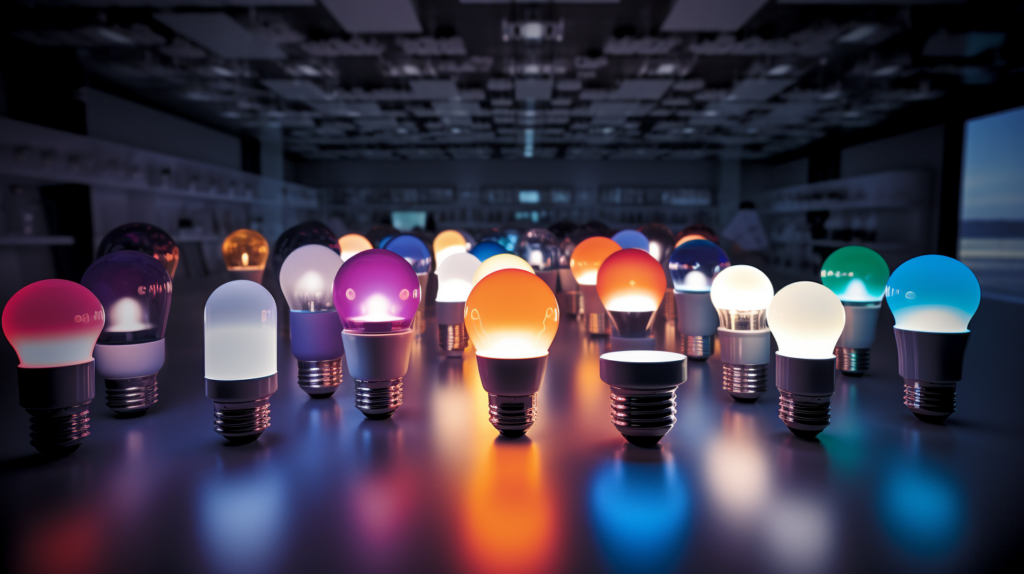
When you want to use LED lights to make a place brighter, it’s important to think about a few things to make sure they work well:
- Right Fixture: Make sure the energy-saving LED bulbs fit and work well in the old light holders you have.
- Matching Dimmer: If you have a dimmer (a switch that adjusts the brightness of the light), make sure it works well with the LED light.
- Correct Beam Angle: Picking the right angle for the light beam is important. The wrong one can cause unnecessary glare.
- Mixing Lights: Be careful when using different kinds of lights together, as it can cause problems.
Using LEDs in Traditional Fixtures

People often switch out old light bulbs with new LED ones. LED lights are great because they save energy and usually work really well! But, sometimes, when we put LED lights in older fixtures meant for the old bulbs, they don’t work as they should.
When we put LED lights in these older fixtures, they can get too hot because there isn’t enough air for them. When this happens, the light might turn off. Also, sometimes the light might be too dim or too bright because the fixture and the LED light don’t match well.
But, don’t worry! If you have these problems, there’s an easy fix. You just need to get a fixture that matches the LED light.
Things To Remember:
- Find the Right Match: Make sure the fixture is right for the LED light so you don’t have any problems.
- Watch Out for Heat: If the LED light is in the wrong fixture, it can get too hot and might turn off.
- Check the Brightness: If the light is too dim or too bright, you might need a different fixture.
- Easy Fix: If there are problems, just get a new fixture that works with LED lights.
Compatibility Concerns with Modern Lighting

In the world of modern lighting, compatibility is a huge concern. Home and office owners need to worry about whether their LED lights are compatible with their existing dimming systems or not.
When people want to update old spaces with new, energy-saving LED lights, it can be a bit tricky. Many are switching from old-fashioned light bulbs to LEDs because they use less energy.
But here’s the catch: not all dimmer switches work well with LED lights. Some people find out that when they try to use them together, they run into problems. And to make it even more confusing, some LED lights work better with certain types of dimmer switches.
So, it’s really important to check if the LED lights and dimmer switches will work together before buying them. Even if they seem to work fine at first, there’s no promise they won’t give you trouble later on as things get old and wear out.
Dimmer Setting Challenges

Using dimmable LED lights requires some additional considerations beyond the traditional incandescent bulbs. This includes testing for compatibility with a particular switch or fixture, ensuring good performance, and preventing buzzing noise from occurring because of poor wiring.
Incompatible LEDs can cause significant damage to the light source and control due to circuit-level interactions that induce uncontrollable currents in LED lamps. The most common problem arises when non-dimmable LEDs are installed with a dimmer switch. They may flick on suddenly or will not work at all as they are built to operate at full brightness levels only.
Even when compatible LED lights are configured correctly, there is still the risk of buzzing sound caused by loose connections or poor quality LED driver within the light itself.
Furthermore, phase cut dimming will also require special care during installation. They have design limitations, such as maximum wattage output. Also they generally reduced efficiency as compared to other methods like Pulse Width Modulation (PWM).
Inappropriate Beam Angle Selection

When selecting an LED fixture, one of the most important considerations is beam angle selection. Choosing the wrong beam angle can lead to usability issues such as uneven lighting. It can also cause glare which can result in visual discomfort.
Uneven lighting occurs when too narrow a beam angle is used for the size of a given space. This will create areas that are too bright and other spots that are too dim. Conversely, if too wide of a beam angle is selected then this can cause glare problems because some lines of sight may be far brighter than others.
Hence, it’s important to choose an appropriate sized beam angle to achieve optimum performance from your lights while ensuring they won’t overwhelm you with irritating levels brightness or dip into darkness at any point.
Mixing Different Types of Lighting Technologies

Different lighting technologies such as LED, fluorescent, and incandescent can cause compatibility issues with one another especially when used in the same system. Therefore, it is important to consider how each type of technology interacts with existing circuitry and ensure they are compatible before mixing them together.
For example, dimmers designed for traditional light bulbs may not function properly if LEDs or other energy-efficient fixtures are connected. This could lead to problems from flickering lights all the way up to electrical fires if proper precautions aren’t taken.
Risks of Overpowering Light Bulbs
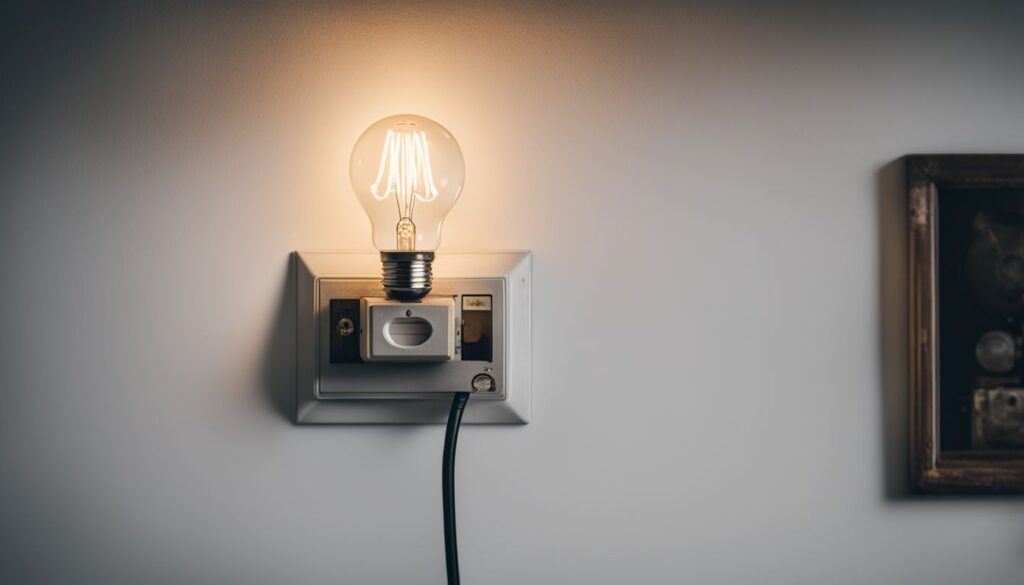
Another common snag in LED lighting is using light bulbs with a wattage that exceeds what’s recommended for the fixtures. Overpowering lamps can be unsafe and may cause overheating, increase fire risks and even affect performance due to incompatible dimming systems or fixtures.
Using an LED lamp with too much wattage is risky. It can melt wires, burn materials, and change the shape of sockets. This can create dangerous situations, like fires. Using the wrong light bulbs can also cause them to work poorly, wear out faster, and cost more to operate.
It’s important to note that this issue is not limited only LEDs but applies all types of lights including incandescent bulbs too. To avoid these issues it’s crucial that you make sure you check usage rating according to bulb type. Also do not exceed rated power ratings on your current system when switching over from traditional sources like fluorescent.
Environmental and Health Concerns
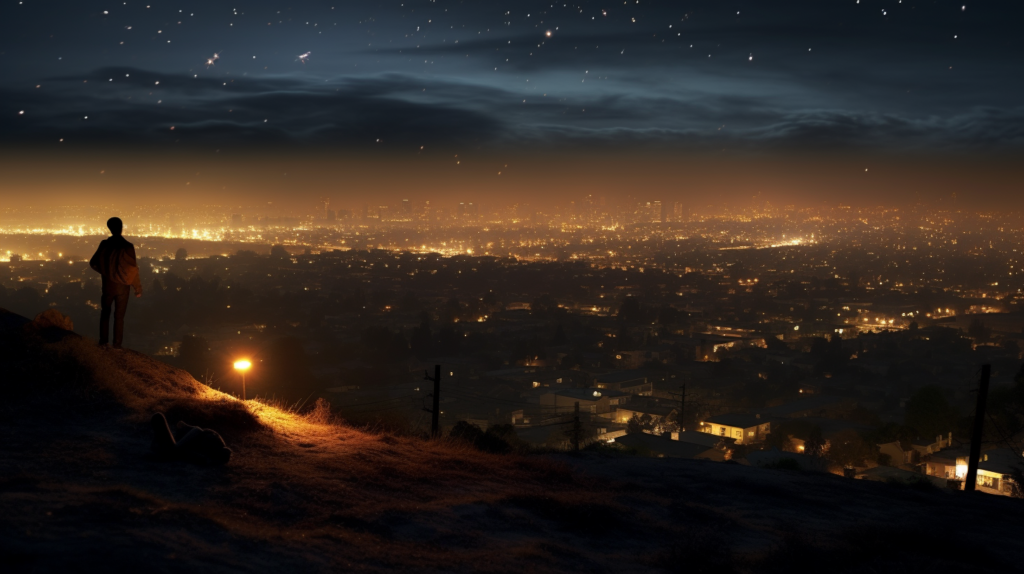
LED lighting offers tons of environmental and health benefits, but there are some potential problems that must be considered. These include:
- blue light pollution
- emission of ultraviolet and infrared rays
- attracting insects or bugs with bright lights
Environmental Concerns: Blue Light Pollution

LEDs are a top choice for lighting due to their high efficiency and long-lasting lifespans, but they come with some serious environmental concerns. One of the most concerning is blue light pollution.
Blue light can interfere with nighttime sleep patterns, harm wildlife behavior, and overwhelm dark spaces around us. This leads to an increase in global light pollution that has severe health impacts on humans.
Studies show that LED bulbs, which produce both UV and blue wavelengths of visible spectrum light can lead to adverse effects on human heath. These negative effects include suppression of melatonin production and disruption to the circadian rhythm.
Emission of Ultraviolet and Infrared Rays

LED lighting may produce a variety of radiation, including ultraviolet (UV) and infrared (IR). UV rays can cause short-term skin damage and long-term risks to health. It has also been linked to eye diseases like cataracts and pterygium.
In some cases, prolonged exposure to strong UV radiation even increases the risk of developing certain types of cancer. IR radiation is invisible but still powerful enough to cause harm when exposed in large amounts.
UVA/UVB bulbs have both UVA and UVB lights, and they make a lot of energy that can be harmful to our skin, animals, plants, and even insects if we don’t handle them carefully and safely.
Attracting Insects or Bugs with Bright Lights

LED lights emit different wavelengths of light that can be attractive to bugs and insects. Typically, LED bulbs with lower wavelengths more bugs as the bugs can only see certain wavelengths in the spectrum.
Insects are drawn to bright lights because they confuse their navigational systems. This issue can be addressed by using bulbs with higher spectral output or changing the angle and direction of the light.
Additionally, properly installed LED lights with appropriate orientation away from specific locations could mitigate bug attraction too.
Sound and Heat Issues With LED Fixtures

Issues such as buzzing sounds, overheating and the importance of heat sinks are common problems associated with LED lighting.
Annoying Buzzing Sounds from Light Fixtures

Have you ever been in a room with LED light fixtures emitting an irritating buzzing sound? This is a common dilemma with LED lights, and can be caused by loose wiring, low voltage or poor quality driver.
It can also result from electromagnetic interference. These could be coming from nearby appliances such as microwaves, cell phones, televisions and computers. To address this issue, try making sure that all electrical connections are secure and that the voltage supplied to the LED light is within the recommended range.
Additionally, make sure to consider other sources of interference when using dimmers. Of course, if our tips don’t help solve your issue it might mean you need to replace your current setup or upgrade some components of your LED lighting system.
Overheating Issues in Modern Lighting
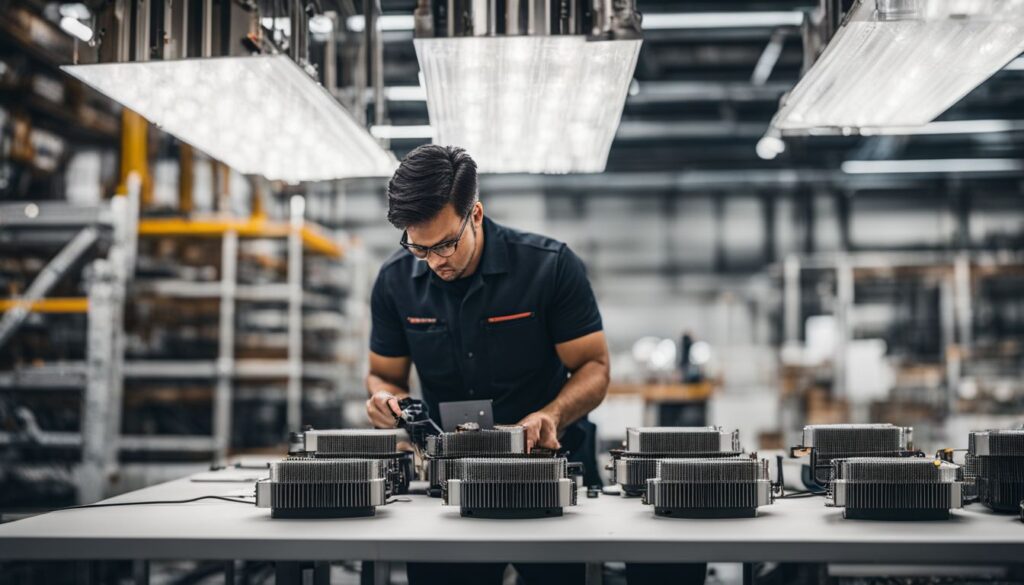
Overheating can be another common issue for LED lighting. An overheating LED light can cause reduced performance, shortened lifespan, and premature failure.
Poor wiring or incorrect installation can contribute to an increased risk of overheating. Voltage drop and using the wrong current supplied to the LEDs may lead to heating issues as well.
Improper use of LEDs, such as putting them in enclosed fixtures without proper ventilation or cooling fans could also result with dangerous temperature levels.
Importance and Challenges of Heat Sinks in Lighting
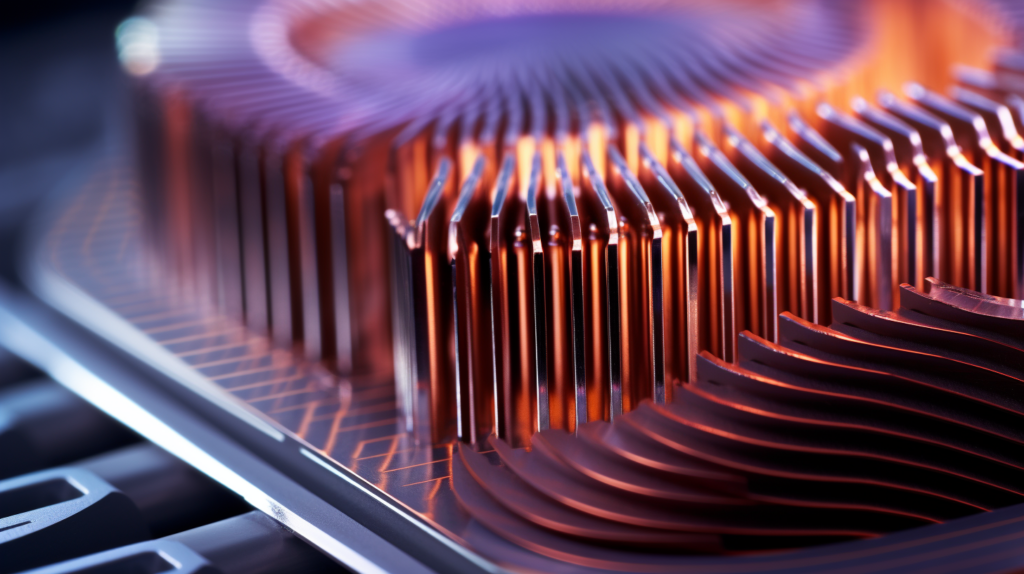
Heat sinks are crucial for LED lights. They help cool the lights, making sure they work well and last long. When LED lights overheat, they don’t shine as bright and don’t last as long.
Think of heat sinks as a cooling breeze for LEDs, keeping them safe during long uses. It’s important that they are the right size, shape, and made of the right materials to work well.
In places like offices, where many lights are used together for a long time, it’s very important to use good heat sinks. Without them, lights can get damaged and can be dangerous because of overheating.
Lastly, if one part of an LED light stops working, it can make other parts too hot. A good heat sink protects against this by managing the extra heat, keeping the light safe from further damage.
Quality and Longevity
Quality concerns can lead to shorter lifespans and reduced performance. Using low quality light sources can lead to:
- Premature failure
- Short operational life spans
- Reduced performance
Quality Concerns with Low-Grade Light Sources

Low-grade LED lights can often create problems related to quality, performance, and usability. They may have issues with flickering and poor color rendering which affects the overall viewing experience.
Low-grade light fixtures are also prone to premature failure due to circuit overloading or voltage drop. In addition, such lighting devices emit high levels of ultraviolet radiation. This can be harmful for humans when exposed over long periods of time.
The Guardian has reviewed studies that suggest potential health issues as a result of using low-quality LED bulbs including:
- headaches
- eye strain
- flicker fatigue
- migraines in some cases
Premature Failure of Energy-Efficient Bulbs
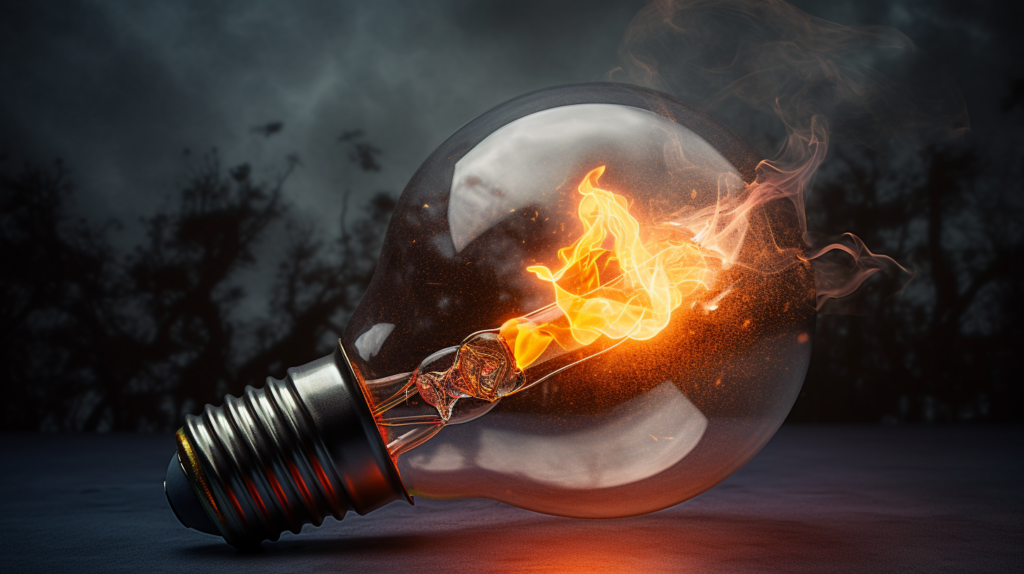
The lifespan of LED bulbs is often shorter than incandescent bulbs, and premature failure can be caused by multiple factors. Overheating is one of the major issues that may damage LEDs quickly and reduce their life significantly.
Lower-priced LEDs are likely to have cheaper materials resulting in poor heat dissipation methods. This increases the chance of overheating. Flashing or flickering LEDs could also be an early sign of driver failure, so it’s important to keep a check on this issue as well.
To avoid such problems and ensure more reliable performance from your LED bulbs invest in higher quality products. You get what you pay for. Even if they come with a slightly higher price tag upfront. In the long run you will save money by reducing replacement costs due to premature failures!
Challenges with Non-Replaceable Integrated Light Sources
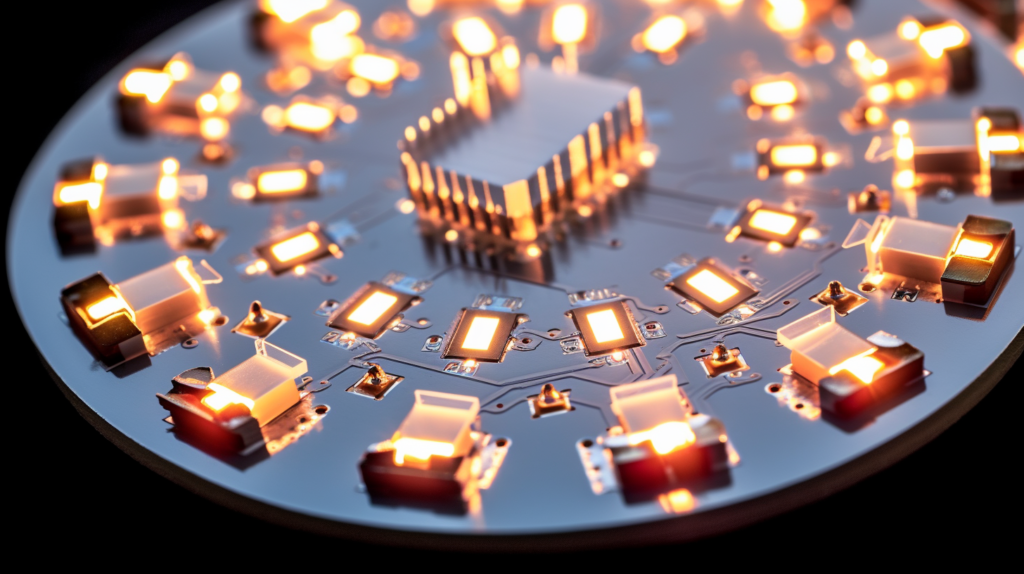
A common concern with LED technology is the quality and longevity of non-replaceable integrated light sources. The inability to replace these lights presents a few problems, as any issues that come up must be solved while keeping the existing source in place.
Unfortunately, this restricts troubleshooting solutions and leaves less room for modifications or upgrades when needed. Non-replaceable LEDs reduce flexibility greatly compared to incandescent bulbs which are simpler to replace should something go wrong.
Furthermore, if a component within an integrated system fails, it may require the replacement of the entire unit. With high quality LED chips, the driver is more likely to fail first.
It’s important for consumers considering LED lamps to view all their options carefully. It’s not always cost effective nor practical to install fixtures without replaceable features depending on usage conditions. If you do decide to go down the integrated LED route, make sure to look for ones with a strong warranty. For example, our company offers a five year warranty on all commercial purchases and three years on consumer purchases.
Misuse of Lighting Systems
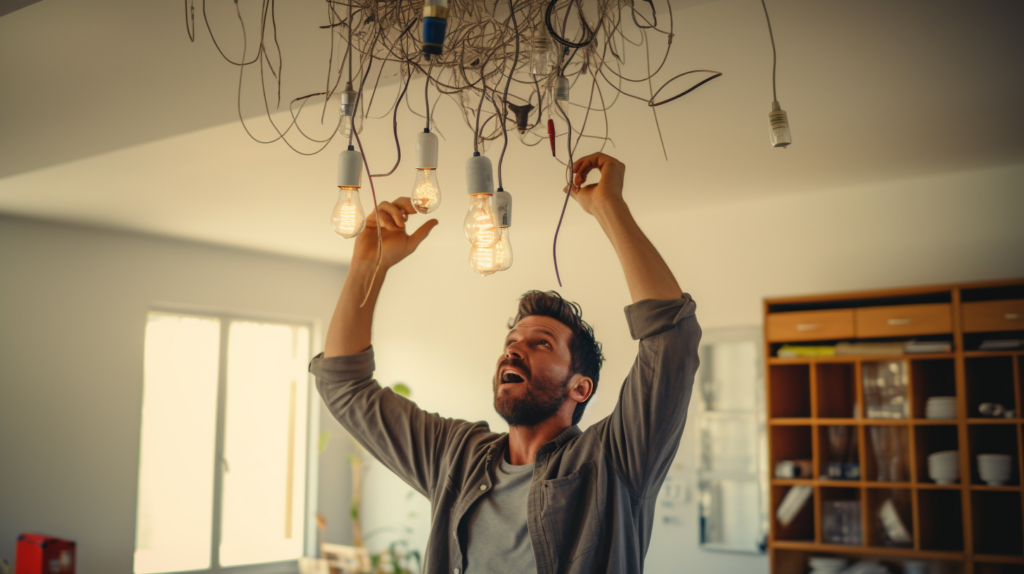
When it comes to lighting set ups, there are many risks posed by misuse. Whether from incorrect installation or not using the right components for your light system, improper use of lighting can lead to problems. These include:
- dimming issues
- flickering lights
- incompatible wiring
LED bulbs are especially tricky. They have a maximum wattage limit; using a bulb that’s too powerful for its socket can damage the bulb and the fixture around it.
Moreover, many LED lights need special setups like cooling systems or specific wiring. If these needs are ignored or mixed up—especially when using different brands together—it can lead to poor lighting results. So, it’s important to follow the guidelines and be extra careful when mixing brands, even if they operate at the same voltage.
Frequently Asked Questions – LED Issues
What are common problems with LED lighting?
Common problems with LED lighting include flickering, buzzing noise, and not enough light output. Installing the wrong LED driver could also cause the lights to malfunction or reduce their lifespan.
What should I look for when installing Led Lights?
When installing LEDs you should ensure your product has a compatible driver. This is essential to ensuring optimal performance of LED bulbs and fixtures. Additionally, make sure your LED needs are suitable for RGB LEDs if that is what you need them to be used for.
What can I do when my led lights flicker or produce a buzzing noise?
In most instances, flickering and buzzing noises from dimmable LEDs indicate a compatibility issue. This issue is usually between the driver and the bulb it’s paired with. This mismatch leads to irregularities in the current flow. Replacing either the driver or the bulb can often resolve these issues. If the problem persists, seeking the assistance of a professional electrician is recommended. They can provide further assistance and possible solutions.
I have been the project manager for Modern.Place since early 2016, spending three of those years working overseas on the manufacturing & procurement side of the LED lighting industry. Constantly learning and passing on knowledge to others while excited for what the lighting industry will involve into next.





